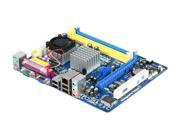
|
Columns | Projects | Reviews |
|
George Ross, February 10, 2011

The PV530 is packaged so that the board shouldn't suffer any damage during shipping. It is packaged like most motherboards are nowadays. You get the bare essentials as far as accessories go. Again this motherboard is targeted at emerging markets were price is the main concern so it is no to surprised to see such a sparse offering of accessories.


The first thing that jumps out at you when you look at this motherboard is its support for both DDR2 and DDR3 memory modules. This gives the end user more flexibility with their memory purchase allowing them to maximize the value that they can achieve with a setup based on this board. This board also features some expandability options offering a PCI Express 2.0 x16 (x8 electrical) and a good old fashioned PCI slot. You also get a pair of USB headers and a pair of SATA headers. One of the nicer things you may notice about this motherboard is its three 3-pin fan headers one of which is supplying power to the fan that cools the processor. The capacitors that are associated with powering the CPU are solid capacitors and the rest are of the cheaper variety. All in all I was impressed with this motherboards layout if I could change anything about this boards layout I would have liked to have seen a PCI Express x1 slot.
I used the HR-05/IFX chipset heatsink to cool the CPU during the overclocked portion of testing. I was able to get the CPU clocked to 1,988MHz. Here are the rest of the particulars on the systems used in these tests.
| Processors | VIA PV530 @ 1.8GHz | VIA PV530 @ 1.988GHz | Intel Atom D510 @ 1.66GHz |
| Motherboards | ASRock PV530 | Jetway NC94FL-510-LF | |
| Memory | G.SKILL 4GB DDR2 1100 @ 400 MHz (DDR 800) 5-5-5-15 Single Channel Mode | ||
| Hard Drive | Seagate Barracuda ES.2 ST3250310NS 250GB 7200 RPM 32MB cache SATA 3.0Gb/s | ||
| Video | VIA Chrome9 HD DX9 Graphics | Intel GMA 3150 | |
| Optical Disk Drive | LITE-ON HES208 | ||
| Power Supply | Seventeam ST-850PAF 850W | ||
| Operating System | Windows 7 Ultimate x86 | ||
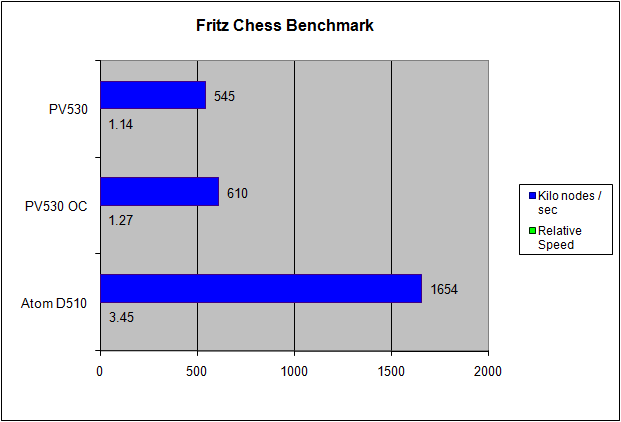
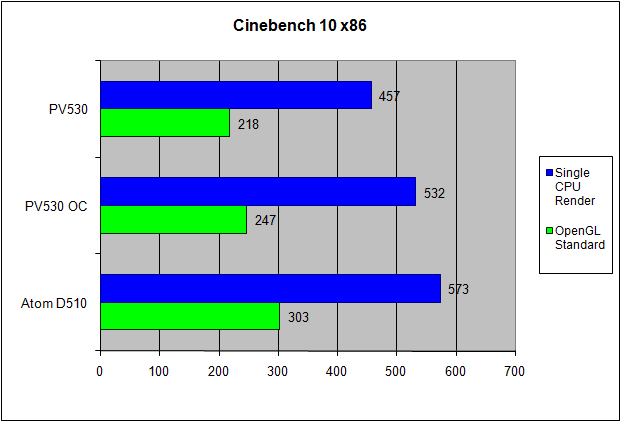
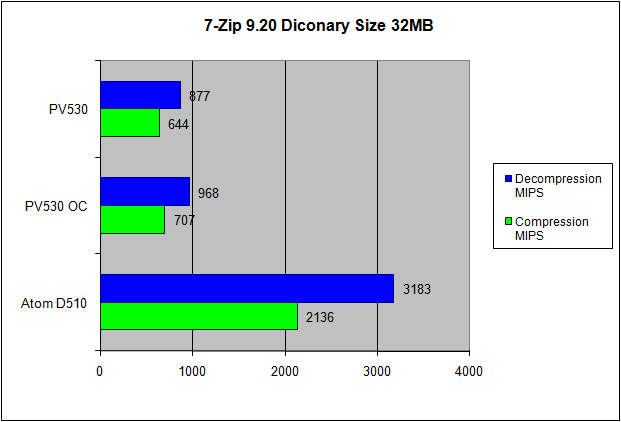
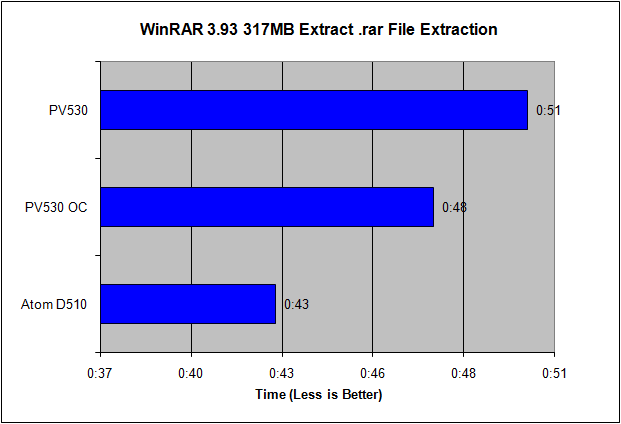
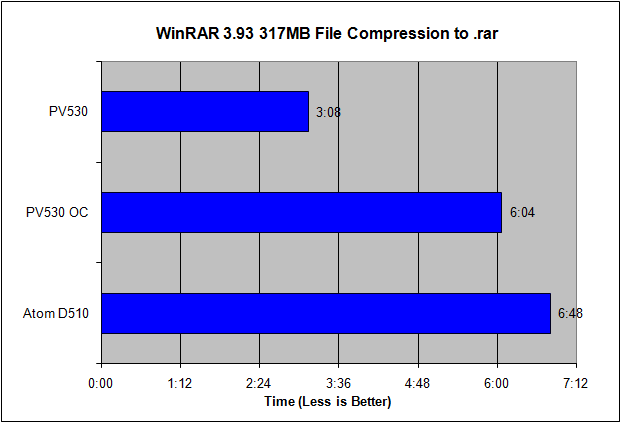
Before you look at any benchmark comparisons it is important to note the PV530 can't even playback flash video at a decent frame rate. Every video I tried to watch was choppy.
As expected the PV530 takes a sound beating from the Atom D510 setup.
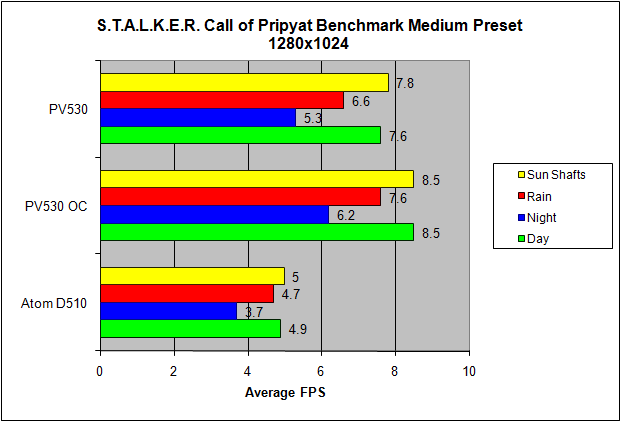
Now this is interesting while none of these numbers are acceptable the PV530 bested the Atom D510 setup in S.T.A.L.K.E.R. Call of Pripyat benchmark.

As you can see the integration of the GPU into the CPU's package pays off for the Atom D510 setup as far a power usage is concerned as it didn't use as much power as the PV530 did in the S.T.A.L.K.E.R. Call of Pripyat tests. It also didn't perform as well in those tests either.
